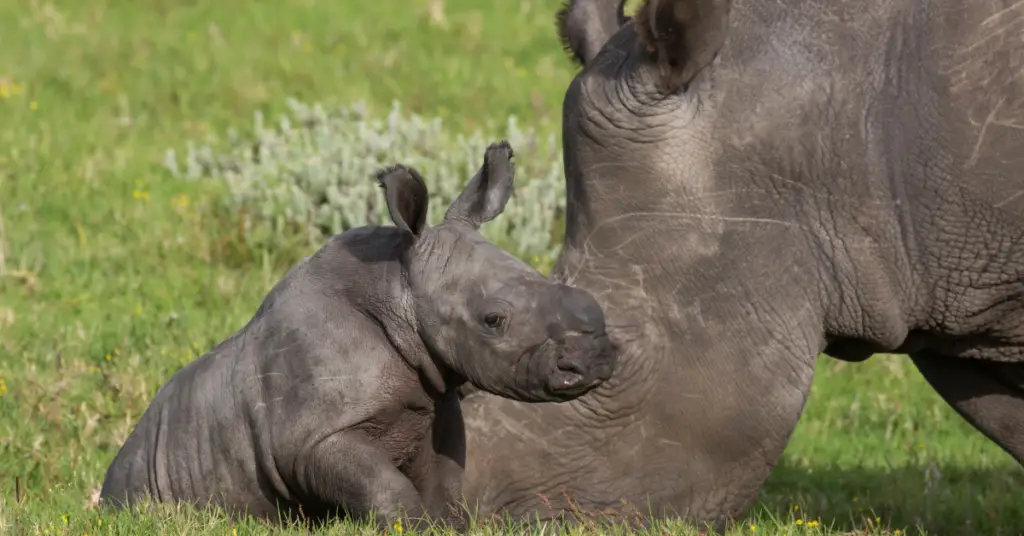The main threat to the population of the white rhinos is illegal hunting (poaching) to fuel the illegal international trade in rhinos. It is estimated that around 95% of rhino horn is currently sourced from Africa for illegal end markets in Southeast Asia.
Rhinoceros horn has traditionally had two main uses: use in Chinese medicine and ornamental use. Rhino horn has recently become a popular material for making high-ranking and expensive carvings such as bowls and bracelets. In the past, it was also used to produce ornately carved handles for ceremonial daggers (jambiyas) worn in Yemen and some middle east countries. In the past, rhinoceros horn was also used in traditional Chinese medicine (as an antifebrile). However, most recently it appears to be shavings from carvings that are illegally sold to the medicinal market at lower prices than worked items.
Poaching levels increased significantly from 2007 to 2014. The dramatic increase in poaching since 2007 has dramatically increased the costs of protection and the risks to investments and personnel. Poaching and civil wars both in the Democratic Republic of the Congo and in neighboring countries have a devastating impact on Northern White Rhino.
While poaching pressure initially increased during civil unrest and war in the late 1990s, good breeding has kept the population relatively stable. However, poaching has increased since 2003 and the population has rapidly declined with 11 carcasses found over a three-month period between March and May 2004.
Confirmed numbers of northern white rhinos fell from 30 individuals in April 2003 to just four in August 2005. No live rhinos have been seen since 2006 or no signs of live rhinos (dirt or droppings) have been reported since 2007 despite intense systematic foot surveys. It is thought that the northern white rhinoceros has probably disappeared in the Congo. Rumors persist about possible survivors in war-torn South Sudan, but so far there is no conclusive evidence that this is true.
In 2012, 668 rhinos were illegally killed in South Africa. The demand for rhino horn is the greatest threat to the survival of this species with Asia and especially Vietnam being the main market. The growing rhino poaching crisis in South Africa has been linked to the demand for rhino horns an ingredient in traditional medicine and as a status symbol of wealth and power.
There are traditional medicines that have proven to be effective for treating a variety of ailments and symptoms and have saved millions of lives. Rhino horn is not one of them. Despite the facts, lies, myths and widespread rumors fuel the demand and use of rhino horn.
In traditional medicine, rhino horn is used to treat a long list of ailments: from fever to hallucinations and headaches. In recent years, the use of rhino horns in Vietnam among the middle and upper classes seems to have grown. Rhino horn mixed with water or alcohol has been used as a detox drink to treat hangovers. The media has included statements referring to the benefits of rhino horn in relation to cancer treatment. But there is no proof to support this belief. And it is a sad truth that so many rhinos were killed for medicines that have no proven effects.
To feed the demand poachers have evolved from using bows, arrows, and spears to using high-powered rifles, helicopters,night vision equipment, and veterinary tranquilizers. Some poachers now poison rhino carcasses to kill vultures whose presence might draw attention to the site.
Illegal wildlife trade is frequently associated with other criminal activities, including illicit arms and drug trade, corruption, and money laundering. It is also known to help fund regional conflicts and even terrorism.

Erzsebet Frey (Eli Frey) is an ecologist and online entrepreneur with a Master of Science in Ecology from the University of Belgrade. Originally from Serbia, she has lived in Sri Lanka since 2017. Eli has worked internationally in countries like Oman, Brazil, Germany, and Sri Lanka. In 2018, she expanded into SEO and blogging, completing courses from UC Davis and Edinburgh. Eli has founded multiple websites focused on biology, ecology, environmental science, sustainable and simple living, and outdoor activities. She enjoys creating nature and simple living videos on YouTube and participates in speleology, diving, and hiking.

